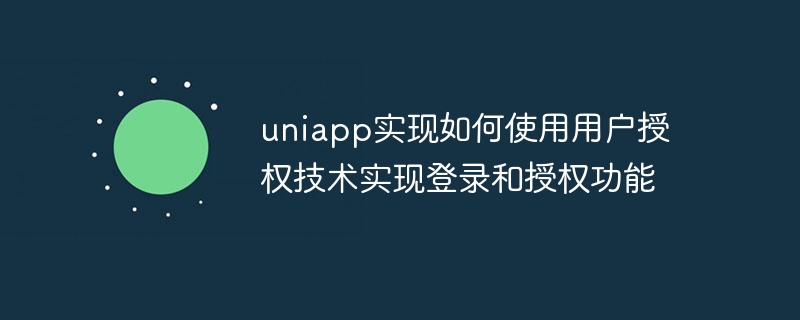

uniapp implements how to use user authorization technology to implement login and authorization functions
In recent years, with the rapid development of the mobile Internet, more and more applications require user login and authorization for normal use. In uniapp, we can take advantage of its cross-platform features and use user authorization technology to implement login and authorization functions. This article will introduce in detail how to use uniapp to implement this function, and attach specific code examples.
The user login function is an indispensable part of the application. It usually requires users to provide legal credentials to verify their identity. In uniapp, you usually use your account and password to log in or a third-party account. The following is a sample code to implement the user login function:
// 登录页面
In the sample code, we use thev-modelinstruction to combine the value of the input box withusernameandpasswordBinding, the user enters the username and password in the input box. When the user clicks the login button, theloginmethod will be triggered. In this method, we can call the backend interface and send the username and password to the backend for verification. After successful verification, the user information can be stored in local or global variables and jumped to the home page.
In addition to the login function, many applications also require user authorization to obtain the user's permissions to perform corresponding operations. In uniapp, we can use third-party authorization plug-ins to achieve this function. The following is a sample code to implement the authorization function:
// 授权页面
In the sample code, we have bound theauthorizemethod to the button. When the user clicks the button,will be called. uni.authorizemethod to request user authorization.scope.userInfoindicates the authorization to request user information, which can be modified according to specific needs.
When the user agrees to the authorization, thesuccesscallback function will be executed, in which we can perform the corresponding operations. If the user refuses authorization, thefailcallback function will be executed, in which we can prompt the user to enable authorization.
Through the above sample code, we can implement the user login and authorization functions in uniapp. When the application requires login and authorization, the user can log in by entering the user name and password, or click the authorization button to authorize the application to obtain user information. The implementation of these functions helps ensure application security and user experience. Of course, in actual development, we can also expand the login and authorization functions according to specific needs to meet more business needs.
The above is the detailed content of uniapp implements how to use user authorization technology to implement login and authorization functions. For more information, please follow other related articles on the PHP Chinese website!




